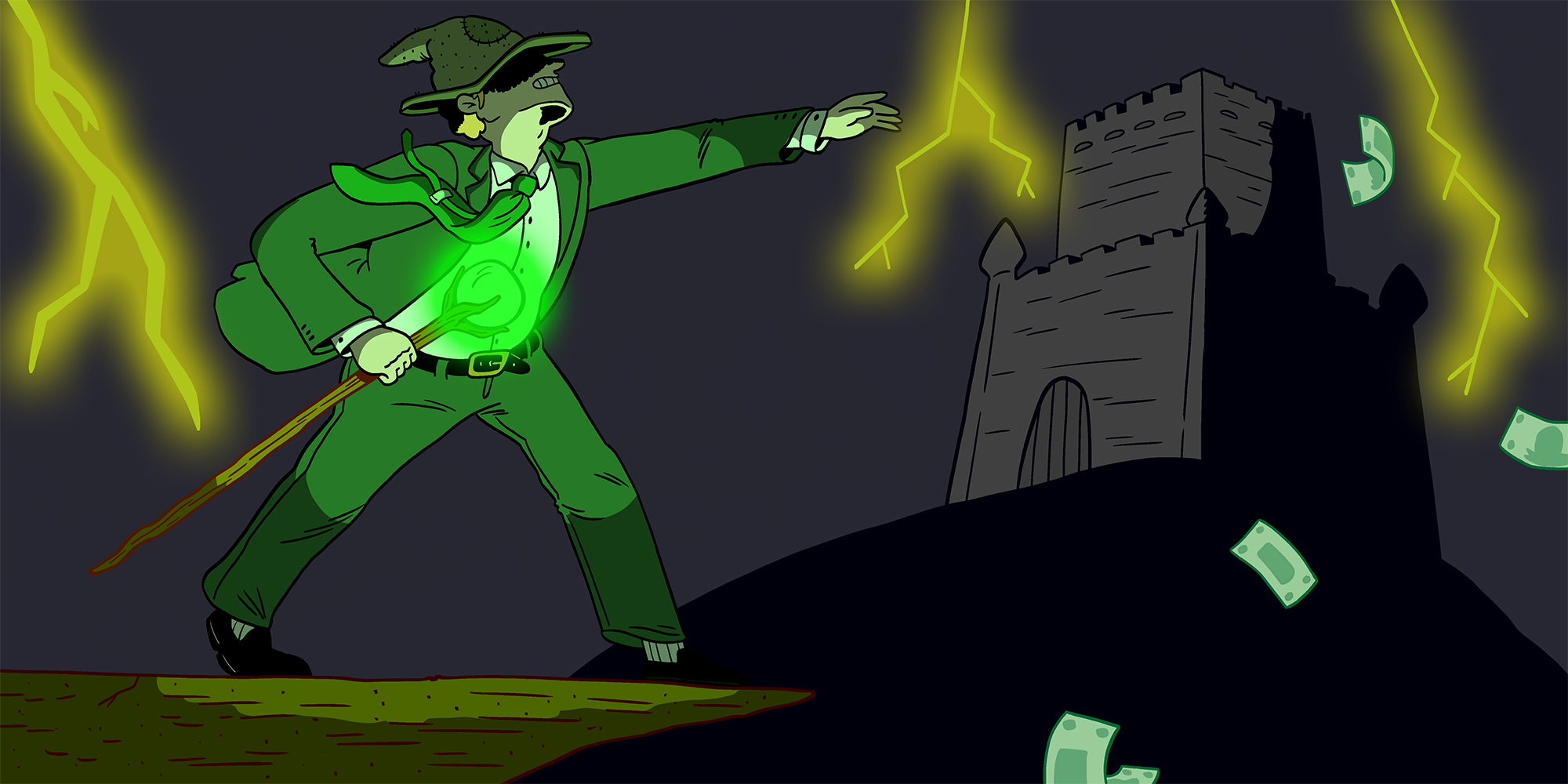The conspirators behind the push for an expensive new lakefront stadium for the Chicago Bears began their extraordinarily tacky announcement ceremony on April 24 with a prayer. Know what they forgot? They forgot to pray that no one would look too closely at the particulars of the financing proposal for this project. The moment is now lost: The Illinois Sports Facilities Authority (ISFA), the governmental body charged with drumming up the public's portion of the debt-financed dough to pay for all this, ran the numbers, and what was already a galling proposal now looks incredibly worse.
Remember those innocent times, [checks calendar] approximately four days ago, when this project was being described as a nearly $5 billion public-private undertaking, for which the public would be asked to fund something like $2.4 billion? Per a new report from the Chicago Tribune, that number included $900 million in borrowed money to help pay for the new domed stadium, plus an additional $1.5 billion in infrastructure spending, to spruce up the area around the stadium with parks and green spaces and fully realize what Wednesday's hype video described as "a world-class destination." But included in the proposal, says the ISFA, is a refinancing of a mountain of existing debt taken on for renovations of Soldier Field way back in 2002, of which only about half has been paid off, plus the establishment of a $160 million "liquidity fund," essentially a backstop against any future effects of the dreaded economic headwinds. Turns out there's a lot more in here than meets the eye: "Counting interest and other long-term costs," reports the Tribune, via ISFA CEO Frank Bilecki, the total cost to the public will be something like $4.8 billion, and that is if the project is all paid off on schedule, without any snags or hiccups or global pandemics along the way.
And it's a long, long way: The proposal has the city devoting tax revenue to this debt for an appalling 40-year term. The average age of the other 31 NFL stadiums is less than 24 years, a number that is inflated significantly by the stadiums of the Bills and Chiefs and Packers, two of which are in the process of being replaced. Only five NFL stadiums currently in operation are at least 40 years old; one (Soldier Field, the current home of the Bears) was basically entirely rebuilt around the turn of the century using public debt financing that even if it isn't baked into this new stadium scheme will eventually cost taxpayers approximately $1.1 billion, per the Tribune. The hotel tax revenue that the Bears are asking the city and state to use to back the public debt and secure the liquidity fund would not be redirected for the general good of the city, in this proposal, until at least 2064, or approximately 15 years after the first procreated replicant learns that her real father is Harrison Ford.
Needless to say, $4.8 billion can buy a lot of public goods. Increasingly it seems like sports owners are attaching tantalizing public goods to impressive sketches of their own fancy new homes and then trying to convince taxpayers that they can't have the one without the other. A humongous domed boondoggle purpose-built to house the property of a family that measures its wealth in the decuple digits is not something the public should be paying for, whether or not it comes with parks and fields. "I just think that the taxpayers' dollars need to be protected," said Illinois governor J.B. Pritzker, a skeptic, after sizing up the Bears' proposal. "I’m a Bears fan, and I want to see a domed stadium in the city of Chicago. But again, the question is, 'Who’s paying for that,'" Pritzker told the Tribune. If Chicago has a hotel tax that can be used to line the lakefront with beautiful and enriching public spaces, and that's something Chicagoans want, they should do that. If the McCaskeys want a gaudy domed stadium nearby to grow tired of within a single blooming cycle of an agave plant, that's something they can and should sort out for themselves.





